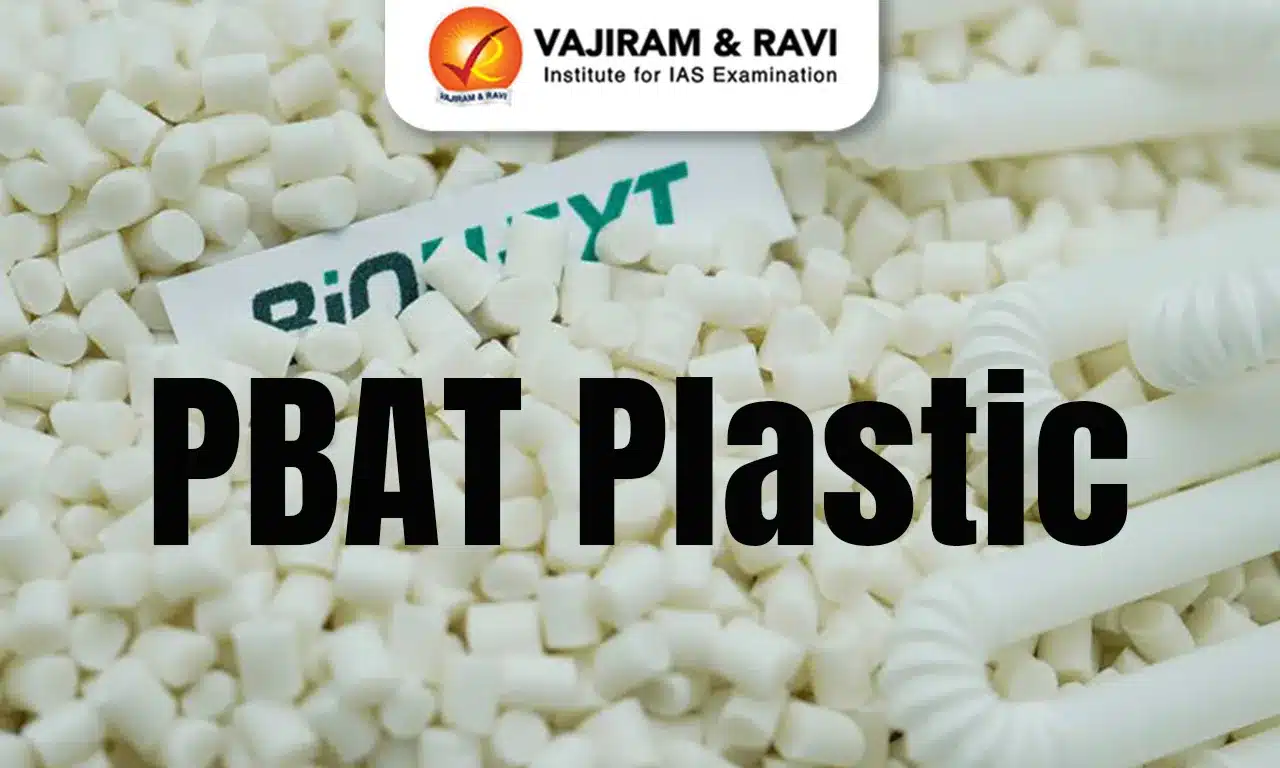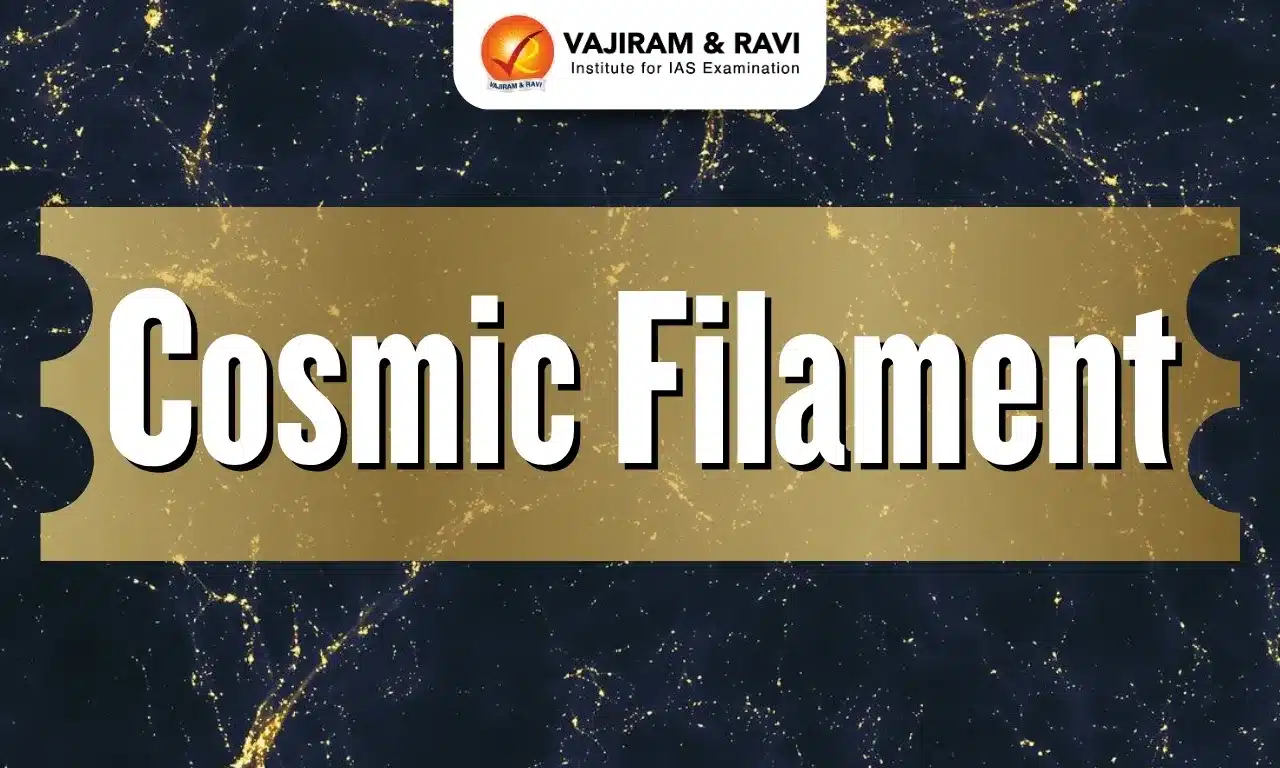PBAT Plastic Latest News
Kamalpur Nagar Panchayat in Tripura has introduced compostable bags made from PBAT as a sustainable alternative to single-use plastic (SUP).
What is PBAT Plastic?
- PBAT (Polybutylene Adipate Terephthalate) is a biodegradable thermoplastic polymer used as an eco-friendly substitute for traditional plastics.
- It is a copolymer of adipic acid, 1,4-butanediol, and terephthalic acid and can be processed using conventional plastic manufacturing methods.
- PBAT is often blended with other biopolymers to enhance its mechanical and barrier properties.
Properties of PBAT
- 100% compostable – breaks down into water, CO₂, and biomass under industrial composting conditions within 180 days.
- Flexible and tough, making it ideal for bags, films, and packaging.
- It is moisture-resistant, chemically inert, and offers good barrier properties.
PBAT vs PLA
|
Feature |
PBAT |
PLA (Polylactic Acid) |
|
Composition |
Copolymer of adipate + terephthalate |
Made from lactic acid (corn/sugarcane) |
|
Flexibility |
Flexible and tough |
Rigid and brittle |
|
Applications |
Bags, packaging |
Cutlery, electronics packaging |
|
Degradation Rate |
Faster composting |
Slower degradation |
|
Cost |
Lower than PLA, but higher than conventional plastics |
Higher than PBAT |
PBAT Plastic FAQs
Q1: What is PBAT plastic?
Ans: PBAT (Polybutylene Adipate Terephthalate) is a biodegradable and compostable plastic that behaves like conventional plastic but decomposes in the environment under industrial composting conditions.
Q2: Is PBAT plastic eco-friendly?
Ans: Yes, PBAT is considered eco-friendly as it breaks down into carbon dioxide, water, and biomass, reducing plastic pollution.
Q3: What is PBAT made from?
Ans: PBAT is a fossil fuel-derived polymer synthesised from butanediol, adipic acid, and terephthalic acid. Though biodegradable, it is not bio-based.
Source: PIB
Last updated on November, 2025
→ Check out the latest UPSC Syllabus 2026 here.
→ Join Vajiram & Ravi’s Interview Guidance Programme for expert help to crack your final UPSC stage.
→ UPSC Mains Result 2025 is now out.
→ UPSC Notification 2026 is scheduled to be released on January 14, 2026.
→ UPSC Calendar 2026 is released on 15th May, 2025.
→ The UPSC Vacancy 2025 were released 1129, out of which 979 were for UPSC CSE and remaining 150 are for UPSC IFoS.
→ UPSC Prelims 2026 will be conducted on 24th May, 2026 & UPSC Mains 2026 will be conducted on 21st August 2026.
→ The UPSC Selection Process is of 3 stages-Prelims, Mains and Interview.
→ UPSC Result 2024 is released with latest UPSC Marksheet 2024. Check Now!
→ UPSC Prelims Result 2025 is out now for the CSE held on 25 May 2025.
→ UPSC Toppers List 2024 is released now. Shakti Dubey is UPSC AIR 1 2024 Topper.
→ UPSC Prelims Question Paper 2025 and Unofficial Prelims Answer Key 2025 are available now.
→ UPSC Mains Question Paper 2025 is out for Essay, GS 1, 2, 3 & GS 4.
→ UPSC Mains Indian Language Question Paper 2025 is now out.
→ UPSC Mains Optional Question Paper 2025 is now out.
→ Also check Best IAS Coaching in Delhi
Tags: pbat plastic prelims pointers upsc current affairs upsc prelims current affiars

















